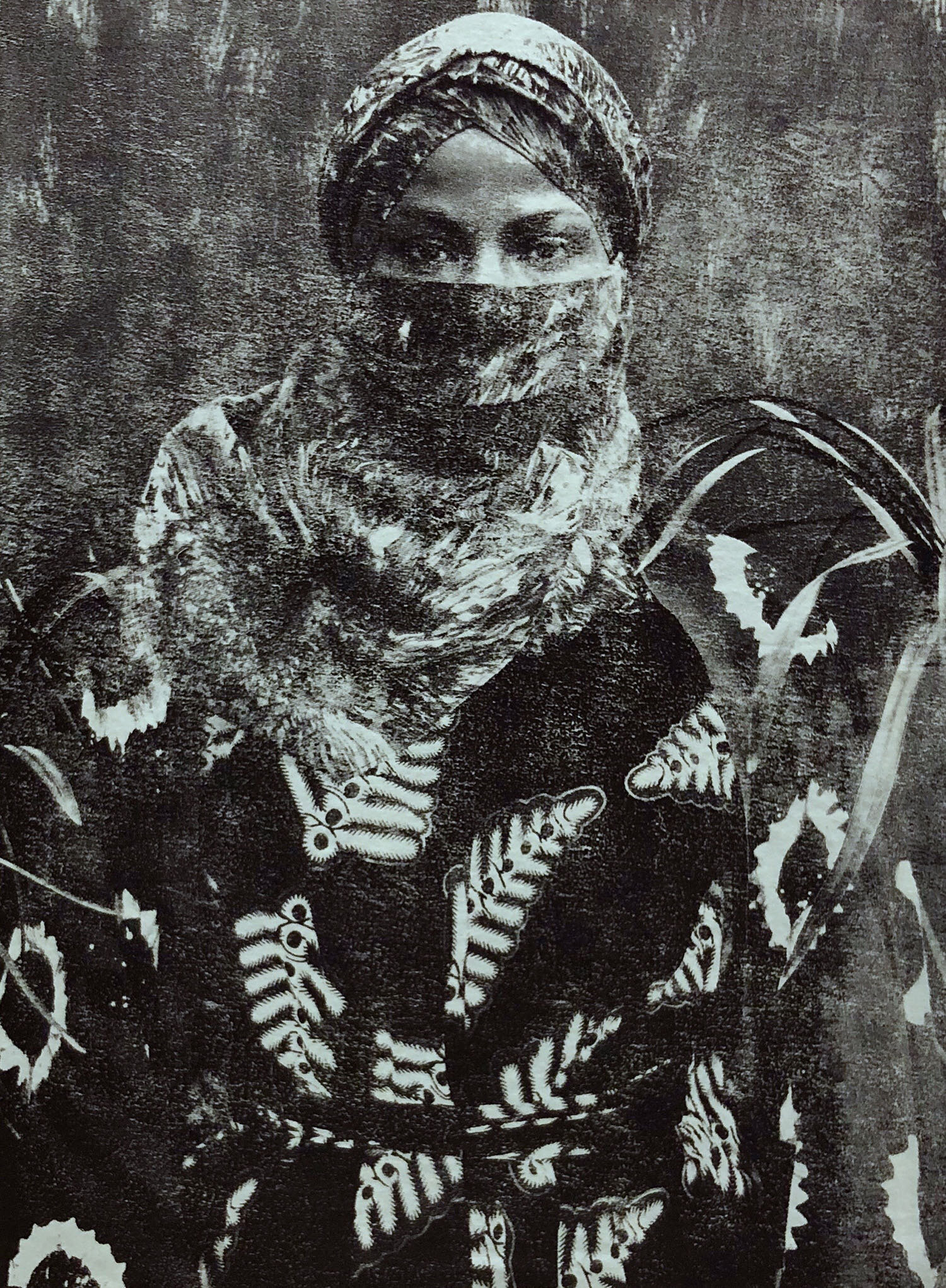- HARMATTAN TALES |2018 -
THE CHILDREN OF MA GOLDSMITH |2017-2018
Screenprint on cotton, hand-stitched
Unique
79 × 108.8 cm
RAFIA |2017-2018
Screenprint on cotton, hand-stitched
Variations of 2
Artist Proof: 1
120 × 85.7 cm
RADDIYA |2017-2018
Screenprint on cotton, hand-stitched
Unique
111 × 107.6 cm
ZULLAIHA |2017-2018
Screenprint on cotton, hand-stitched, beads
Unique
100 × 140 cm
SHELTERED |2017-2018
Screenprint on mixed cotton
Variations of 5
Artist Proof 3
118 × 94 cm
SECRETIVE |2017-2018
Screenprint on cotton
Variation of 5
Artist Proof 2
111 x 84,5 cm
TYE DYED, 2017-2018
Screenprint on denim
Variations of 5
Artist Proof 2
118 × 94 cm
UNDERCOVER |2017-2018
Screenprint on cotton
Variations of 5
Artist Proof 2
111 × 84.5 cm
OMNYA |2018
Screenprint on cotton jacquard, Monotype print, Plexiglas application, hand stitched
Variations of 2
Artist Proof 1
220 × 174 cm
WITHIN US |2018
Screenprint on cotton jacquard, acrylic, Tye Dye application, denim, hand stitched
Variations of 2
Artist Proof 1
296 x 170 cm
HARMATTAN TALES |2018
This body of work is about time, points of origin, lived experience, and the resultant revelations. The women in ‘Harmattan Tales’ hail from various African countries and they share a faith. They are covered by the veil, but within their communities and amongst one another, there are varying degrees of unveiling, which make them undeniably visible.
This journey created an undertone of storytelling by focusing on dress codes while Opoku explored three very different women’s personal beliefs and narratives, their acts of veiling and unveiling inherent to their daily rituals, movements in and out of public and private spaces, and the ways in which these movements influence their activities and responsibilities, regardless of age, marital or family status. They let her discovering a life in the city through their lens.
It becomes a vehicle for Opoku’s return to Ghana self-exploration via the intimacy of otherness and reveals an intricate set of social dynamics, which are shrouded in secrecy for those outside of their circles. These are questions of access, comfort, and admiration sustained by delicate threads of trust and respect. The notion of being completely veiled is an intriguing contrast given the ebbs and flows of modern life, where practicality reigns supreme. Especially the brightly colored garments of Hausa women in Ghana are not just an aesthetic statement, but they also determine the aesthetic feel of the market place where these women shop and work. Opoku has entered the intimate private spaces of three women’s lives, following them with gentle curiosity to capture moments and situations, which sparkle vibrantly, giving the spectator space to let the imagination wonder what stories the scenery is telling and focusing on the politics and aesthetics of the hijab, a detail, which is both to me: stunning and disruptive and became an even bigger “Politikum” after the Trump travel ban when Opoku first presented the work.























